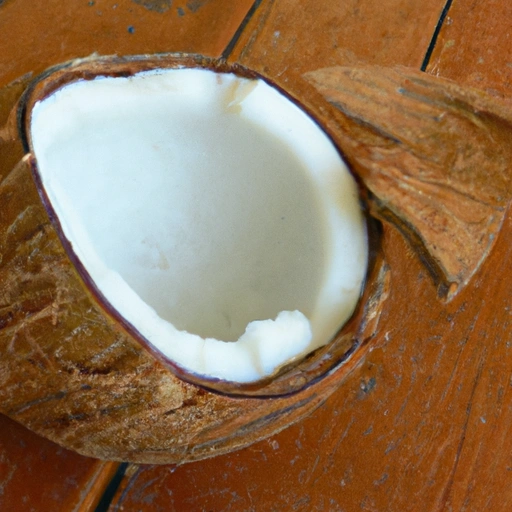Coconut
Description

The coconut, known scientifically as Cocos nucifera, is not only a beloved tropical fruit but also an incredibly versatile ingredient in the kitchen. Its rich, slightly sweet, and nutty flavor enhances a wide array of dishes, from sweet to savory. Coconuts are harvested from the coconut palm tree and can be used in various forms, including fresh meat, coconut water, milk, cream, oil, and dried or desiccated flakes.
Common uses
Coconuts are widely used in cooking and baking, as well as in beverages. Coconut water serves as a refreshing drink, while coconut milk and cream are key ingredients in curries and soups. Coconut oil is popular for frying and baking, and dried coconut adds texture and flavor to sweets and snacks.
Nutritional value
Calories
One medium-sized coconut (about 397 grams or 14 ounces) provides approximately 1,405 calories.
Protein
This same coconut contains about 13 grams (0.46 ounces) of protein.
Fat
Coconut is high in fat, with around 133 grams (4.7 ounces) of fat, predominantly saturated fat.
Carbohydrates
The carbohydrates content is about 60 grams (2.12 ounces), which includes dietary fiber and sugars.
Vitamins
Coconuts are a good source of B vitamins, including thiamine, riboflavin, niacin, and folate.
Minerals
They also provide minerals such as potassium, phosphorus, magnesium, and iron.
Health benefits
Coconut is high in dietary fiber, which can aid in digestion and may help regulate blood sugar levels. The medium-chain triglycerides in coconut oil are thought to be metabolized differently, potentially providing an energy boost and supporting weight management. Coconut water is hydrating and a natural source of electrolytes.
Potential risks
Due to its high saturated fat content, excessive consumption of coconut can be a concern for individuals with heart disease or those monitoring their cholesterol levels. Some people may also have allergies to coconuts, which can cause food sensitivities or reactions.
Common recipes
Common recipes include Thai and Indian curries, Filipino desserts like buko pie, Caribbean coconut rice, and Brazilian coconut flan (quindim). Coconut-based products are also used in vegan recipes as dairy substitutes.
Cooking methods
Coconut can be shredded, blended, pressed, or toasted. It is used to make coconut milk and cream through a process of soaking and straining, and coconut oil is extracted by cold pressing.
Pairing with other ingredients
Coconut pairs well with tropical fruits, chocolate, seafood, poultry, and spices such as cinnamon, cardamom, and curry powders.
Summary
Coconut is a multifaceted ingredient with a rich history and cultural significance. It is celebrated for its versatility in the culinary world and is used in a variety of dishes around the globe. With its unique flavor profile and numerous forms, coconut adds depth and tropical flair to both sweet and savory recipes. While it is nutritionally dense, moderation is key due to its high saturated fat content.